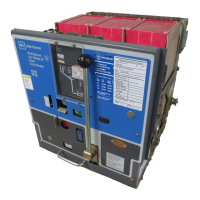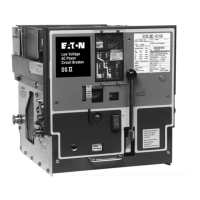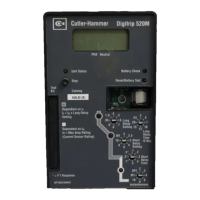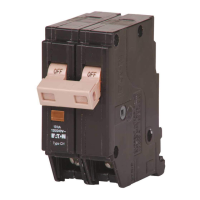Page 72
1.8. 33-790-11
Section 10 - Fixed Breakers
10.0 GENERAL
Fixed Breakers differ from the drawout version
in
that
they do not have levering device, primary disconnects
and secondary disconnects. They do have padlock fea-
ture to hold the breaker
in
"trip-free" position. Key inter-
lock mounted
in
the location
of
levering device may also
be supplied to insure proper sequence
of
operation
between two
or
more breakers. This insures that before
the interlock key can be removed to be used
in
another
location the circuit breaker must be opened and held
in
trip-free position. The breaker stabs have holes for bolt-
ing to the bus connections. Terminal blocks mounted at
the back
of
the breaker are used as secondary contacts.
The frame is modified so that the breaker can be
mounted
on
the panel.
Section
11
- Drawout Dummy Elements
11.0 GENERAL
A dummy element consists
of
a drawout frame
or
truck
with disconnecting contacts and with connecting links
between the upper and lower terminals
on
each pole.
When inserted into a compartment it bridges the upper
and lower stationary disconnecting contacts
in
each
phase, and is thus equivalent to
an
isolating disconnect-
ing switch.
It must be emphasized that a dummy is not a breaker,
and has no current breaking ability whatsoever; there-
fore, it is almost invariably key interlocked with a breaker
or
other load interrupting device, to insure that it will be
isolated or at least carrying NO current before it can be
levered out to the disconnected positions.
Dummy element requires the same size compartments
as those
of
equivalent type DS breakers
of
the same
frame sizes. The key interlock is
of
the same type and
operates
in
the same manner as that described
in
Sec-
tion 9 for type DS-3200 and DS-4000 drawout fuse
trucks.
Effective October 1998
Courtesy of NationalSwitchgear.com

